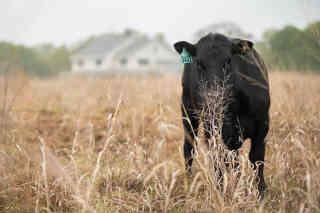Looking ahead to winter grazing and feeding after a second dry year is no rancher’s idea of fun. Yet, look ahead we must, for the good of the herd and our rangeland.
In 2021, severe drought dried up forage and drove reductions in hay stores, forcing 40% of farmers to liquidate a portion of their herd. Conditions aren’t much better this year, with almost 40% of the Lower 48 states experiencing drought. Add in poor range conditions and rising feed costs (up nearly 15% from 2021), and ranchers are facing exceptional challenges when it comes to managing dormant season grazing.
With the right strategies, however, we can manage the forage we have, ensure the long-term viability of rangeland and, most importantly, sustain our operations and margins.

FIRST, TAKE INVENTORY OF YOUR FORAGE
Moving into winter, you need to know how much forage you have and what you’ll need to get through to next season. Ideally, you want enough residual to last 30 days into spring so that any pastures grazed in late summer through winter have time to regrow and come to a full flush. If you graze new-growth grass too early, cattle consume forage that’s full of water and high crude protein, but low in structural carbohydrates, and therefore provides minimal gain.
To estimate forage inventory, first calculate your forage demand and reserve herd days. Reserve herd days are the number of days your existing total number of cattle (herd) can graze on existing forage reserves, including standing pasture, and stored forage such as hay – total grazeable forage for existing herd of cattle.
BALANCE STOCK AND FORAGE INVENTORY
What if your reserve forage and livestock inventories don’t balance? On rangeland, you’ll need to destock and reduce your herd to match the amount of reserve forage inventory. If you’re fortunate to have access to cropland, you may have other options (as explained later).
MOVE TO MANAGED GRAZING
Once you balance stock and forage inventory, it’s time to allocate the forage you have – and that’s where managed grazing comes in. For maximum efficiency, allow no more than 1 or 2 days of grazing per grazing event or paddock – ensuring that your herd doesn’t graze below the optimal residual height (see “What’s My Optimum Residual” sidebar). You cannot graze that same pasture again until after full expression the following spring.
Moving a herd daily can improve grazing efficiency in a pasture by 30-50% over continuous grazing (depending on the year).
- With managed grazing, you are in control, giving cattle those 1- to 2-day allocations. Used year-round, managed grazing can help you better understand the balance between reserve herd days and livestock inventory, and play a more active role in sustaining residuals.
- With continuous grazing, cattle eat the desired plants upfront and then continue to regraze those plants, which does not allow recovery.
Knowing available grazing days relative to herd size also allows for greater flexibility and opportunities when it comes to marketing. By knowing monthly forage production, you can better manage your marketing, better sustain your pastureland and get down to profitability. Those goals should always take priority over retaining stock.
Click here to see more...